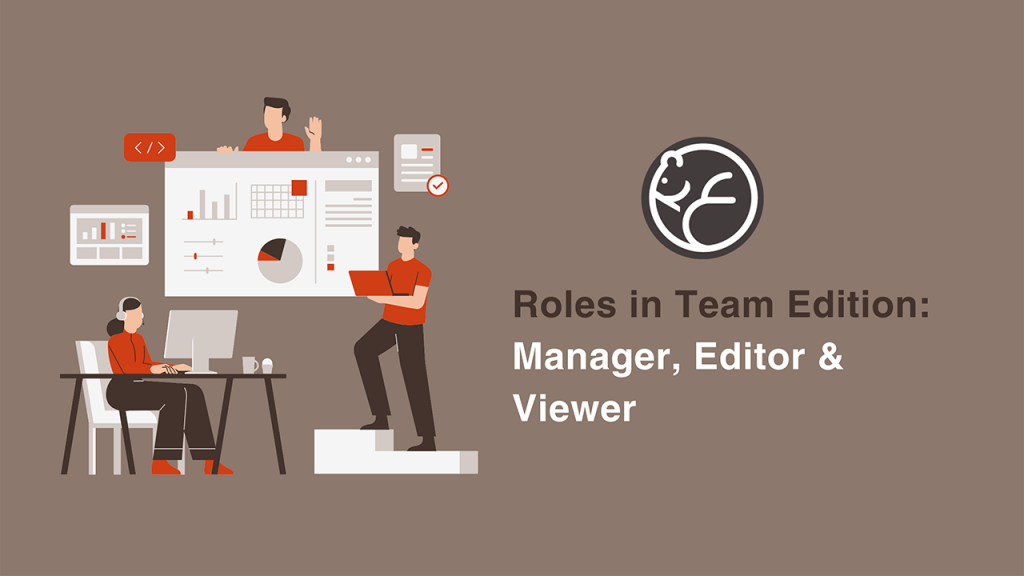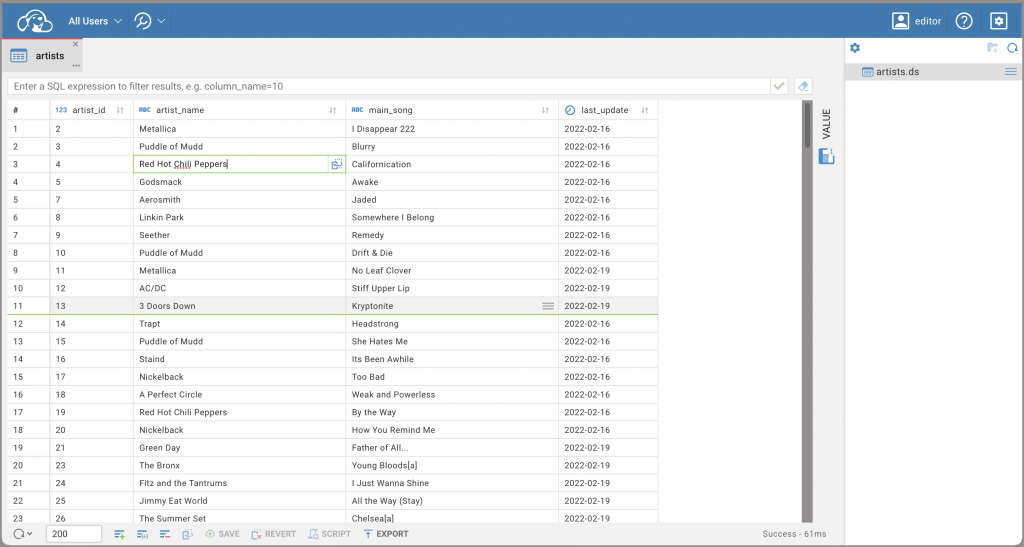Every year, more and more specialists from different fields have a need to work with data. And when it comes to non-technical people, several challenges appear at once.

– How to set the access level to the system for such employees but still allow them to work freely with all the necessary data?
– How can different specialists work on the same project together?
– How can we stop the administrator worrying about users who can perform unsafe operations?
The Team Edition may well solve these problems, and today we will tell you how this is done with the help of new roles: Manager, Editor and Viewer.
Read more about roles:
– Team Edition: why do we need roles
– Roles in Team Edition: Administrator & Developer
– Roles in Team Edition: Manager, Editor & Viewer (you are now here)
The concept of Datasets
Along with new roles, the latest version of Team Edition has a new entity – Dataset. It is the result of an SQL query execution and looks similar to an Excel spreadsheet table. You can turn even the most complex select query into a dataset, and give it a human-readable name. Specialists who work with data often need to deal with the database connection or SQL queries themselves. As it can be difficult for them, it is highly likely that they may perform unsafe operations and accidentally break something in the database. Getting a specific result set in a convenient format and then working with it, would be much more preferable for their needs.
For example, a business analyst needs to get the purchase statistics for the last week and make some calculations based on them. They used to nees to run a particular query every time or ask technical specialists to do this, and now they get a ready-made dataset. This makes life easier not only for them but also for their team members, who usually spend several hours helping with connection setups and writing queries.
Datasets in the Team Edition can be created by users with the roles Administrator, Developer and Manager. Let’s talk about the latter in more detail.
Manager
The Manager role is suitable for specialists who well-versed in regularly writing SQL queries on their own. For example, they may be data analysts who are working on the search for possible data issues. These specialists do not take part in developing and maintaining the software, or setting up connections. They do, however, have access to the connections that are available in the shared project and can get the necessary data from the database using SQL queries.
The Manager is, among other things, is a link between the technical and non-technical specialists in a team. The Editor and Viewer can access them to get the necessary datasets.

A user with a Manager role in Team Edition has access to both web and desktop applications. They can view connections and scripts within a shared project and create new scripts and datasets. With the appropriate permissions, they can also edit the data. At the same time, this role does not imply any management of projects and roles in the team.
Editor & Viewer
Users with Editor and Viewer roles will only have access to the web version of the Team Edition. They can view, browse, filter, and export existing datasets, whereas the Editors can change the data if they have permission. By getting the datasets they need, users with Editor and Viewer roles can export them to a file and use them for further editing, processing, and creating reports.
For example, if you have a marketing specialist in your team, they usually need to have access to specific data and do research by filtering this data according to the desired parameters. Normally, they would simply run a pre-prepared and stored on their computer SQL query to get the result. This is not only inconvenient, but when the query is stored in this way it can be lost or become outdated. All these problems can be solved by using datasets that contain the correct results of the query. Datasets cannot be lost and can be used by several users at the same time.

Thanks to datasets, it is possible to simplify the work of this kind of specialists, save the resources of other team members and avoid unsafe operations on the database.
All roles in one team
Thanks to the mechanism of roles, one team can include a variety of specialists working on the same project. You can add roles to your license that suit your needs and goals.
For example, your team consists of the following specialists:
1 team lead;
2 DBAs
5 software engineers;
2 data analysts;
2 business analysts;
3 marketing specialists.
How can you distribute roles in the team in this case? You can allocate the Administrator role to the team lead, and if necessary, one of the software engineers can also be made the second Administrator. Your software engineers and DBAs will get the Developer roles, and thus, they will have access to all the technical features of the Team Edition. Data analysts who need to write database queries themselves will become Managers. Business analytics will give the Editor role, and marketing specialists will get the Viewer role.
If one of the roles doesn’t correspond any team members, you can simply choose not to add that role to your license. Please remember that the number of Team Edition users in one license can be increased if necessary, and the roles can be redistributed among your team.

